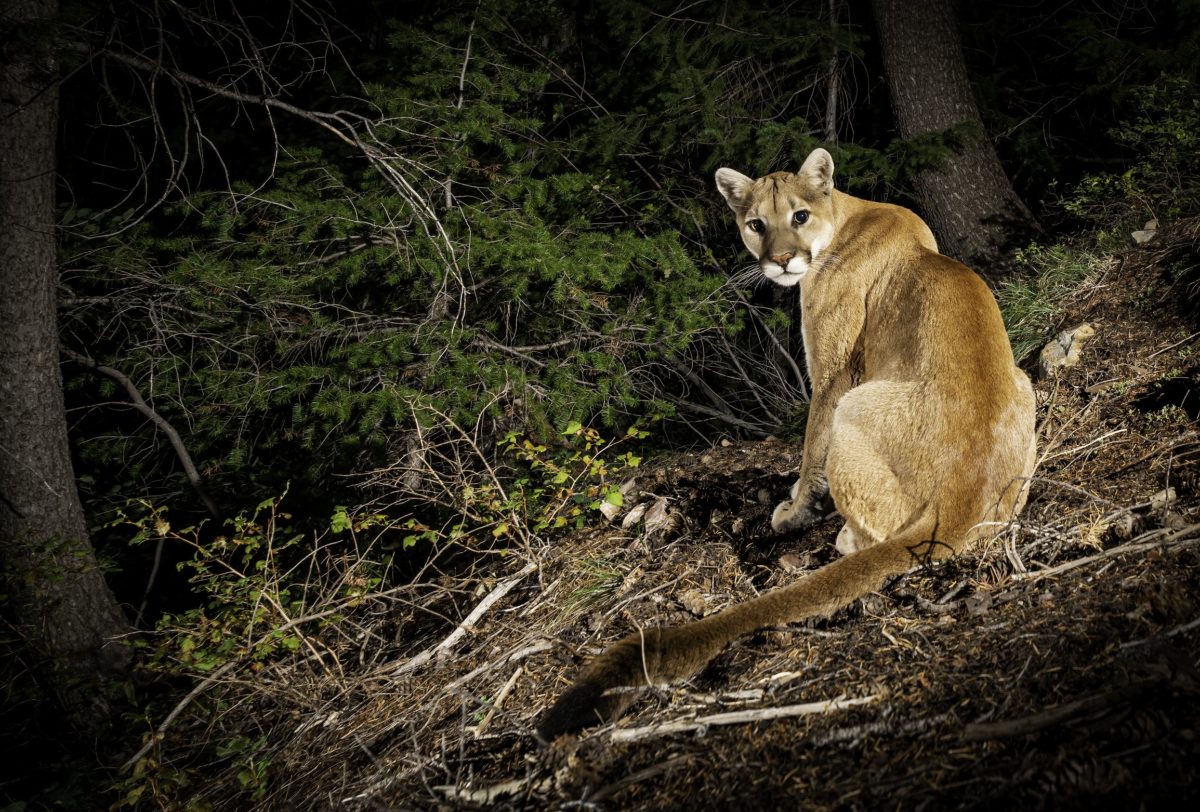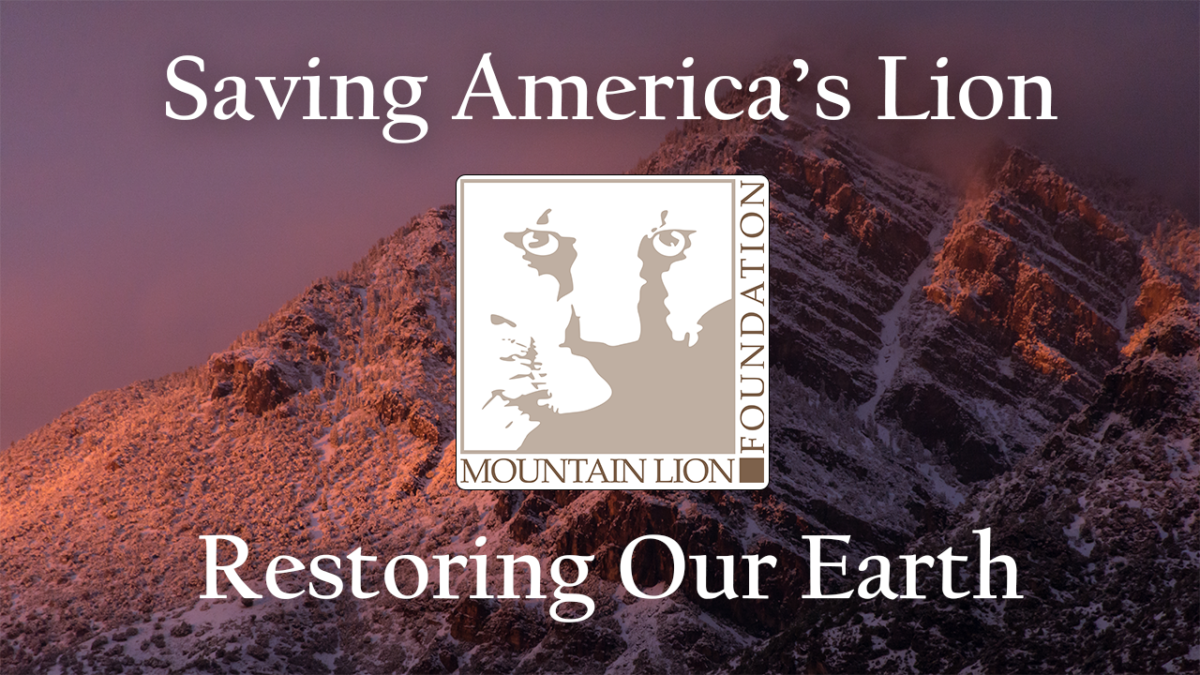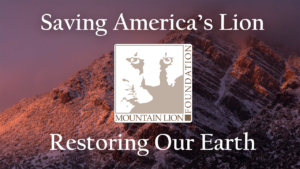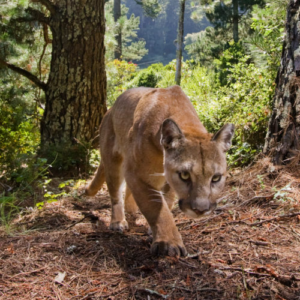The Mountain Lion Minutes are a monthly blog authored by Zack Curcija, an Arizona-based volunteer with the Mountain Lion Foundation.
Why Advocate for Mountain Lions?
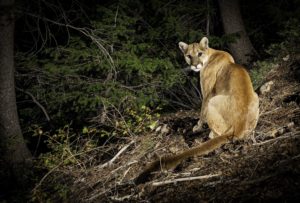
Mountain lion. Puma. Cougar. Catamount. Panther. The many common names that describe the cat known scientifically as Puma concolor reflect the physical prowess and adaptability of the species. Historically ranging from northern Canada to the southern tip of Patagonia and from the Atlantic to the Pacific coasts, the mountain lion is the most successful large mammal in the Western Hemisphere, next to humans. In the United States, the species is now primarily confined to the Mountain West, living in areas that support deer, their chief prey. From alpine meadows, through rugged canyons, and across sunbaked deserts, the mountain lion reigns as the top carnivore throughout most of its present range.
In the rugged American West, and in a small pocket of the Florida everglades, mountain lions found refuge from the centuries of persecution that extirpated the grizzly bear and wolf throughout much of the contiguous United States. Despite losing over 60% of their range in North America since the time of European contact, the IUCN registers the mountain lion as a species of “Least Concern,” since a robust population exists in the western United States and Canada where suitable habitat is currently abundant (Nielsen et al. 2008).
So why advocate for a species if their present population is deemed stable? In short, mountain lions require human advocates for the simple fact that human mismanagement of the natural world poses the greatest threat to the long-term survival of the species. Mountain lions cannot speak for themselves, but their success demonstrates their ability to flourish if afforded sufficient protection from habitat destruction and overhunting.
Ethical questions about the natural world can be viewed through three distinct yet potentially overlapping lenses. An anthropocentric view appraises the natural world for its direct and indirect value to humans. An ecocentric view is concerned with the integrity and intrinsic value of ecosystems. A biocentric view narrows the scope of ethical consideration to the well-being of individual nonhuman animals (Halsey and White 1988). I submit that the preservation of mountain lions strikes at the intersection of all three views, that each perspective forms one part of a braid that is essential to the long-term conservation of mountain lions and other nonhuman animals. In the following paragraphs, I will introduce the ways in which each perspective informs mountain lion advocacy, topics that will be explored in greater detail in subsequent essays.
Mountain lions are sentient creatures, and their capacity to suffer should warrant them ethical consideration on the individual level. Darwin’s (1871) elegant statement that, “The difference in mind between man and the higher animals, great as it is, certainly is one of degree and not of kind” has been substantiated in the fields of modern zoology, psychology, ethology, and others (de Waal 2016). Mountain lions are no exception, and, as mammals, they share with humans hundreds of millions of years of evolutionary history resulting in a similar physiology and nervous system.
Far from being the senseless killers of historical American lore, those who study mountain lions know them to be intelligent animals that exhibit the range of emotions and capacities of domestic cats. Like their domesticated feline cousins, mountain lions are playful, emotional, intelligent, and curious. Trail cameras and observations from the field reveal the otherwise secretive lives of wild mountain lions: a mother mountain lion purring while grooming and cuddling with her kittens, spirited kittens rambunctiously playing amongst themselves, an adult lion pushing and chasing a river cobble across a sandy beach.
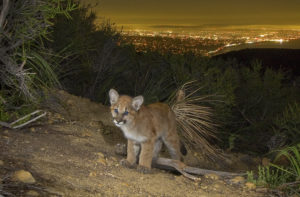
Though generally regarded as solitary, mountain lions exist within a network of intraspecific interactions. Female mountain lions, in particular, spend the bulk of their adult lives caring for litters of dependent offspring. Meanwhile, adult males dedicate a significant portion of their time to patrolling their territory for infiltrating males and searching for responsive females to sire litters.
Recent research is beginning to unveil the complexity of mountain lion sociology. Elbroch and colleagues (2017) recorded reciprocally altruistic food-sharing relationships between individual mountain lions in their study area, where a successful individual shares its kill with another, often unrelated, mountain lion from an adjacent or overlapping territory. Such reciprocal relationships – a prosocial feature common to humans – requires the cognitive ability to recall past encounters, to consider the future, and to mentally map the territories of friendly conspecifics. The authors suggest that this behavior may function to reduce potentially deadly intraspecific conflict, to relieve the high energetic demands and risks associated with frequent solitary hunting, and to maintain social order and breeding access between individual mountain lions.
Existing at low population densities, each individual mountain lion forms an integral component of the regional mountain lion population. With such large territorial needs, mountain lions are known as an umbrella species, because protecting sufficient habitat for them will invariably provide abundant habitat for a plethora of other species with smaller territorial requirements (Lambeck 1997; Beier 2009). For instance, the average range of an adult male mountain lion of 75-150 square miles may harbor thousands of individuals from other mammal or bird species and millions of individual insects (Shaw 2009).
As apex predators, mountain lions are ecosystem engineers that exert top-down control over the ecosystems they inhabit. Their presence in an area modulates the behavior of prey species. By keeping ungulates alert and mobile, mountain lions prevent the overconsumption of vegetation and mitigate the detrimental ecological consequences that would result, such as inhibited riparian plant recruitment, increased erosion, and changes to stream turbidity and temperature (Ripple and Beschta 2006). By disproportionately selecting aged and diseased prey species, mountain lions help direct ungulate population health (Krumm et al. 2010). Once prey is captured, the carrion produced and distributed by mountain lions supports an unprecedented variety of organisms, including numerous species of beetles, birds, and other mammals (Barry et al. 2018).
In addition to the cultural significance of such an iconic species, mountain lions offer ecosystem services that directly and indirectly benefit humans. Although industrialization allows modern humans to feel insulated from the natural world, we still ultimately rely on healthy ecosystems and the health of the components therein. Like other top carnivores, mountain lions are essential to ecosystem function, and their conservation should therefore appeal to those holding even the strongest anthropocentric view.
Though equipped with sharp teeth, claws, and incredible physical capabilities, mountain lions are far from the most dangerous animal to humans in North America. In the United States, this distinction goes to the mountain lion’s primary prey, deer. Each year, over 1.2 million vehicular collisions with deer injure 28,000 and kill over 200 people in the US. These accidents are most frequent in the East, where mountain lions and wolves are absent, and deer have consequently reached unnaturally high densities. Since mountain lions prevent deer overpopulation and modulate deer behavior, the ecosystem services provided by mountain lions offer compelling arguments to encourage their recolonization of their former range, possibly saving hundreds of human lives and billions of dollars each year (Gilbert et al. 2016). In addition to reducing vehicular collisions with deer, mountain lions contribute to curbing the spread of diseases for which deer are vectors, such as Lyme disease and chronic wasting disease (Krumm et al. 2010; Elbroch 2020).
As sentient animals that play an integral role in the ecosystems they inhabit, and upon which humans ultimately depend, mountain lions are worthy of protection. Clairvoyance is not required to foresee the impending threats mountain lions will face in the western US in the coming decades. We need only to identify the factors that led to the extirpation to their eastern cousins a century ago, and the recent extinction of their more distant feline cousins across the globe. Though mountain lions are notoriously cryptic in their habits, decades of rigorous research has clearly established the biological needs of the species. Mountain lions, like other large cats, require large, continuous tracks of biologically productive land with connectivity between subpopulations to maintain genetic diversity. Without adequate protected space, viable populations of mountain lions cannot survive, irrespective of how the species is managed by game agencies.
While levels of sport hunting in some US states exceed historic levels of bounty hunting, the greatest long-term threat to mountain lions is the loss, fragmentation, and degradation of habitat (Shaw 1989). As the human population and attendant industrialization increases in the American West, so too does the pressure placed on mountain lions. The trends of diminishing habitat, an exploding human population, and increasing hunting thresholds in the West are – without intervention – destined to replicate the tragedy of the eastern cougar.
The chronicles of the eastern and western mountain lion populations should not be viewed as distinct, but as a continuous story of the consequences of increasing human population densities and habitat degradation across the continental US. The current plight of threatened subpopulations within the American West offers an alarming preview of a prospective future for mountain lions across their current range. Even in parts of California, where sport hunting is prohibited, immense freeways fragment small islands of protected land thereby genetically isolating small populations of mountain lions. These closed populations are beginning to manifest the same deleterious recessive genetic traits observed in endangered Florida panthers, and both populations – through secure from hunting – suffer high rates of mortality from vehicular collisions (Beier 1993; USFWS 2018; NPS 2020).
Despite their resiliency, there is nothing intrinsic about mountain lions in the West that precludes them from meeting the same fate as their extirpated eastern cousins. Only our game and land management strategies can ensure the long-term viability of mountain lion populations. The current “Least Concern” status of mountain lions should not encourage complacency, but should instead motivate proactivity to anticipate and address impending threats to the species. The present circumstances are not fixed, and only represent a slice of time amid marked demographic changes to the western US. In a sense, the resiliency of the mountain lion has afforded humans the luxury of applying what we have learned from the recent regional extirpation of eastern mountain lions to inform the future management of the species across their present range, an option lost to the numerous taxa of wild cats that went extinct within the last two centuries. From our lofty position as the dominant species on the planet, we have the knowledge, the ability, and the duty to ensure that the magnificent mountain lion thrives in our wild places in perpetuity.
References Cited:
Barry, M., Elbroch, M., Aiello-Lammens, E., Sarno, R., Seeyle, L., Kusler, A., Quigley, H., Grigione, M. (2018) Pumas as ecosystem engineers: ungulate carcasses support beetle assemblages in the Greater Yellowstone Ecosystem. Oecologia 189, 577–586. doi: 10.1007/s00442-018-4315-z
Beier, P. (1993) Determining Minimum Habitat Areas and Habitat Corridors for Cougars. Conservation Biology 7(1), 94-108. doi: 10.1046/j.1523-1739.1993.07010094.x. (2009) A Focal Species for Conservation Planning. In M. Hornocker & S. Negri (Eds), Cougar: Conservation and Ecology (p. 177-189). Chicago, IL: The University of Chicago Press.
Darwin, C.R. (1871) The Descent of Man, and Selection in Relation to Sex. United Kingdom: John Murray. De Waal, Frans (2017) Are We Smart Enough to Know How Smart Animals Are? New York: W. Norton & Company.
Elbroch, M. (2020) The Cougar Conundrum: Sharing the World with a Successful Predator. Washington, DC: Island Press.
Elbroch, L.M., Levy, M., Lubell, M., Quigley, H., and Caragiulo, A. (2017) Adaptive social strategies in a solitary carnivore. Science Advances 3(10). doi: 10.1126/sciadv.1701218.
Gilbert, S., Sivy, K., Pozzanghera, C., DuBour, A., Overduijn, K., Smith, M., Zhou, J., Little, J., Prugh, L. (2016) Socioeconomic Benefits of Large Carnivore Recolonization Through Reduced Wildlife‐Vehicle Collisions. Conservation Letters 10(4), 431-439. https://doi.org/10.1111/conl.12280.
Halsey, M. and White, R. (1998) Crime, Ecophilosophy and Environmental Harm. Theoretical Criminology 2(3), 345-371. doi:10.1177/1362480698002003003
Krumm, C., Conner, M., Thompson Hobbs, N., Hunter, D., and Miller, M. (2010) Mountain lions prey selectively on prion-infected mule deer. Biology Letters 6, 209-211. doi:10.1098/rsbl.2009.0742.
Lambeck, R.J. (1997), Focal Species: A Multi-Species Umbrella for Nature Conservation. Conservation Biology, 11: 849-856. https://doi.org/10.1046/j.1523-1739.1997.96319.x
National Park Service (2020) NPS Biologists Report First Abnormalities Linked to Inbreeding Depression in Mountain Lions (9/9/2020). Retrieved October 7, 2021, from https://www.nps.gov/samo/learn/news/first-abnormalities-linked-to-inbreeding-depression.htm
Nielsen, C., Thompson, D., Kelly, M. & Lopez-Gonzalez, C.A. (2015) Puma concolor. The IUCN Red List of Threatened Species: e.T18868A97216466.
http://dx.doi.org/10.2305/IUCN.UK.2015-4.RLTS.T18868A50663436.en
Ripple, W. and Beschta, R. (2006) Linking a cougar decline, trophic cascade, and catastrophic regime shift in Zion National Park. Biological Conservation 133(4), 397-408. doi: 10.1016/j.biocon.2006.07.002.
Shaw, H. (1989) Soul Among Lions: The Cougar as Peaceful Adversary. Tucson: University of Arizona Press. (2009) The Emerging Cougar Chronicle. In M. Hornocker & S. Negri (Eds), Cougar: Conservation and Ecology (p. 17-26). Chicago, IL: The University of Chicago Press.
United States Fish and Wildlife Service (2018) Florida panther (n.d.). Retrieved October 7, 2021, from https://www.fws.gov/southeast/wildlife/mammals/florida-panther/.


